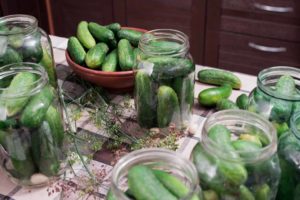Daylilies and tiger lilies are both members of the lily family, but day lilies (Hemerocallis spp.) consist of numerous species while the tiger lily (Lilium lancifolium) is a single species.

Daylilies and tiger lilies have different types of roots, and the blossoms come in different colors, shapes, and different growth forms. Tiger lily blossoms point downwards while daylilies point upwards.
Quick Reference: Tiger Lily vs Daylily
|
What Is a Daylily?

A daylily is a hardy, easy-to-grow perennial plant with big, brightly colored flowers in shades of red, pink, yellow, or purple.
daylily isn’t a genuine lily. Genuine lilies grow from bulbs, while daylilies grow from tuberous roots.
Lily Blooms
The flowers of the daylily grow on leafless stems called “scapes,” which emerge from leaves which grow from a crown. Mature daylilies have up to 6 scapes, each with 13–15 flowers.
The scapes are tall, reaching a height of up to 6 feet and giving an abundant display of blooms.
Roots
Daylilies have an underground root system consisting of tuberous, fleshy roots. The roots spread rapidly through the soil and need dividing every 3–5 years.
To propagate daylilies, divide the roots by cutting them or pulling them apart, and replant the smaller pieces of roots.
Daylilies are easy to propagate and the new roots take well and grow quickly in the right soil conditions.
Grow Period
Plant daylilies in spring to give them enough time to become strong, established plants before the harsh winter conditions set in.
Each plant has numerous flowering stalks, and these stalks bloom for 3 weeks, giving a continuous show of flowers lasting up to 3 months.
Soil and Water Conditions
Moist, well-drained soil is the best environment for daylilies, but they can also tolerate clay. The pH of the soil should be neutral to slightly acidic.
Water daylilies once a week. Daylilies are hardy and can tolerate dry conditions for a limited period.
Light
Daylilies like full sun and need at least six hours of direct sunlight every day. In shady areas, the flowers point towards the sun.
Daylilies are ideal for any type of garden. The flowers give a steady show of blooms and add color to the garden.
The short stems make daylilies good for groundcover in flower beds. Daylilies also do well in pots and containers.
What Is a Tiger Lily?

A tiger lily is a perennial plant that grows from a bulb, which makes it a genuine lily.
Tiger lilies produce large flowers that are usually bright orange with black spots. However, newer varieties of tiger lilies are sometimes yellow, white, or red.
Lily Blooms
The tiger lily flower is 2 inches wide, with petals that curl downwards and backwards. Each tiger lily bulb produces up to 10 flowers every summer.
Roots
The tiger lily has a bulbous root that develops fibers, or roots, at the bottom that grow deep into the soil. The bulbs and fibers allow the plant to absorb moisture and nutrients from the soil.
Tiger lilies don’t grow from cuttings, but they self-propagate by forming bulblets that can be separated and replanted.
Grow Period
Plant tiger lilies in spring for the best show of flowers through the summer months. It takes 3 months for flowers to develop from the time of planting the bulbs. Each stem produces up to twenty blooms.
Soil and Water Conditions
Water tiger lilies deeply once a week for the healthiest growth. Tiger lilies are hardy and drought-resistant, but if you notice that the flowers seem to be wilting slightly, water the plants deeply.
Tiger lilies need moist, well-drained soil with a slightly acidic pH of 5.5–6.5. Add some organic matter, like peat moss, to enrich the nutrients in the soil, and plant tiger lily bulbs 12 inches deep in the soil.
Light
A sunny spot with 6–8 hours of full sun is the ideal place for tiger lilies. These plants thrive in full sun and grow towards the sunlight.
Any type of garden is suitable for planting tiger lilies, as long as the garden gets enough sunlight.
The stems are tall, making tiger lilies a good choice as a backdrop for other shorter flowers. Tiger lilies give a glorious show of color to the garden, providing a good supply of blooms for cut flowers.
Is a Tiger Lily or a Daylily Best for Your Garden?

Daylilies and tiger lilies both offer brightly colored flowers that look spectacular, with daylilies offering a broader variety of colors.
The shape of the two varieties of lily flowers is different, with daylilies facing up towards the sun and tiger lilies pointing downwards.
Day lilies are smaller and have shorter stems than tiger lilies. The growth habits and root systems of the two plants are different, but both are easy to grow and care for, and easy to propagate.
Daylilies and tiger lilies both do well in most types of gardens, and both need moist soil with good drainage. Both daylilies and tiger lilies bloom for 2–3 months, giving a lovely show in your garden.






